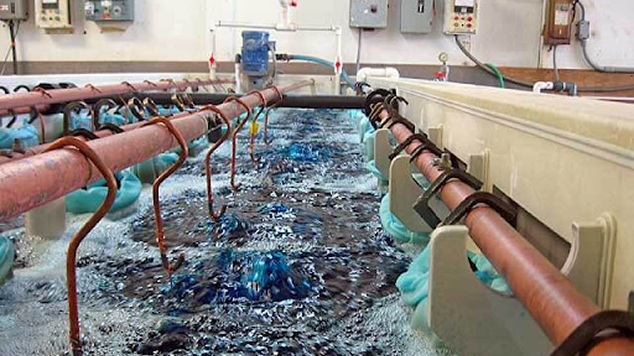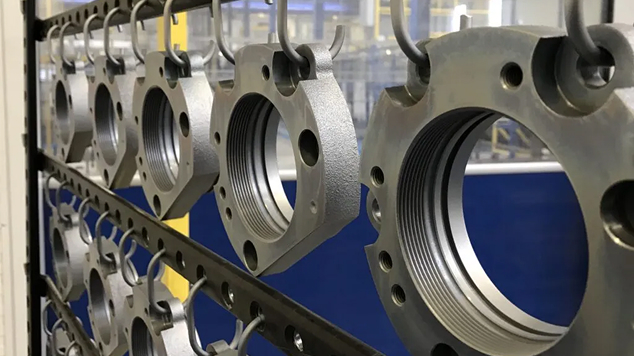Electroplating Process:
Electroplating on castings involves using an electric current to deposit a thin layer of metal onto the casting’s surface, enhancing properties like corrosion resistance or aesthetics. The process includes surface preparation, electrolyte solution preparation, and the actual electroplating with the casting acting as the cathode.
Here’s a more detailed breakdown of the electroplating process for castings:
1. Surface Preparation:
- Cleaning:
The casting must be thoroughly cleaned to remove any dirt, grease, or oxide layers that could interfere with the plating process. - Pickling:
A mild acid pickling solution may be used to remove surface contaminants and prepare the casting for plating. - Ultrasonic Cleaning:
This technique uses sound waves to dislodge deeply embedded contaminants like sand residue, ensuring a clean surface for plating. - Activation:
For nearly neutral or acid electroplating processes, parts should be immersed for a short time in a solution containing sulfuric acid.
2. Electrolyte Solution Preparation:
- Metal Salts:
The electrolyte solution contains dissolved metal salts of the metal you want to deposit (e.g., copper, nickel, chromium). - Additives:
The electrolyte may also contain additives to improve the plating process, such as brighteners or leveling agents.
3. Electroplating:
- Cathode and Anode:
The casting to be plated is connected as the cathode (negative electrode), and an anode (positive electrode) made of the plating metal is placed in the electrolyte solution. - Applying Current:
A direct current is passed through the electrolyte, causing the metal ions from the anode to migrate to the cathode and deposit on the casting’s surface. - Plating Time and Current:
The plating time and current density are carefully controlled to achieve the desired thickness and quality of the plated layer. - Rinsing:
After plating, the part is rinsed thoroughly to remove any residual electrolyte.
4. Post-Plating Treatments:
- Polishing:
The plated surface may be polished to achieve a desired finish. - Sealing:
In some cases, the plated layer may be sealed to further enhance its corrosion resistance.
Examples of metals used in electroplating:
- Copper: Used for its good conductivity and corrosion resistance.
- Nickel: Used for its hardness, corrosion resistance, and good appearance.
- Chromium: Used for its hardness, wear resistance, and corrosion resistance.
- Gold:Used for its excellent corrosion resistance and appearance.
- Zinc: Used for its sacrificial protection against corrosion.

